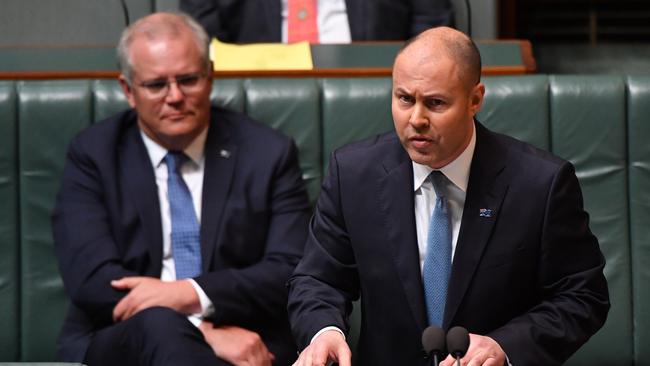Budget numbers almost always wide of the mark
There is one absolute rolled gold certainty about budget figures — they are never right. The only question is how far wrong they are, writes political editor David Killick. FULL ANALYSIS >>
Politics
Don't miss out on the headlines from Politics. Followed categories will be added to My News.
- Revealed: 17 Tassie projects getting federal cash boost
- What’s in the Federal Budget for Tasmania this year?
THERE is one absolute rolled gold certainty about budget figures — they are never right.
The only question is how far wrong they are.
A year ago, Treasurer Josh Frydenberg promised a $7.1 billion surplus out of a half-trillion-dollar budget giving himself a shade over a one per cent margin for error.
It was to be one of four in a row.
Instead 2019/20 saw a $85 billion deficit, next year’s will be $213 billion and the following three budgets will bring the total to $480 billion.

Net debt will balloon to close to a trillion dollars in 2023/24. He thinks.
Every Treasurer knows in their heart, budgets are forecasts and generally optimistic ones at that.
In a normal year, the figures that are printed in black and white on the budget papers are superseded almost the moment the ink dries.
Since the last budget we’ve had an Mid-Year Economic and Fiscal Outlook, an Economic and Fiscal Update and there’s another set of figures in this effort listing the actual outcomes.
Net debt will increase to $703 billion or 36 per cent of GDP this year and peak at $966 billion or 44 per cent of GDP in June 2024 #auspol #politas #Budget2020 pic.twitter.com/KN2cC0trmb
— Helen Polley (@polley_helen) October 6, 2020
Our GDP was down 0.2 per cent last financial year, employment was down 4.3 per cent, CPI dropped 0.3 per cent and wages were flat.
Nobody could have predicted the COVID-19 pandemic.
There have been JobKeeper and JobSeeker payments.
There has been collapses and slight recoveries in retail spending and in unemployment.
Borders have closed, Victoria has been shut down.
There has been stimulus projects: Spending pre-announced Tasmanian roads and heritage tourism projects.
‘Record funding for hospitals’. #Budget2020 #politas pic.twitter.com/UTit1JZfvW
— Dr Bastian Seidel MLC (@DrBastianSeidel) October 6, 2020
Labor rightly points out that even in the best of times, the flow of federal cash for major projects in Tasmania is slow and often the bold promises are either late in coming or do not appear at all.
For example, the $150 million for the Sorell causeway duplication sounds suspiciously like a revised version of a sneaky $136 million which was promised during last year’s election campaign.
For all the formality of the Treasurer’s speech and the weight of the budget tomes, this is Treasury’s best guess about where we are next year.
We have learned that budgets are a fundamentally imprecise art.
But as far as forecasts go, Josh Frydenberg’s are the best we have: Another year of negative GDP growth, unemployment north of seven per cent and flat wages growth.
We will know this time next year how close those estimates were.
Australia has come through this crisis with among the best health outcomes in the world.
The financial impact is brutal, but there is a pathway to recovery.
After the year that 2020 has been, we should be thankful things aren’t even worse.



